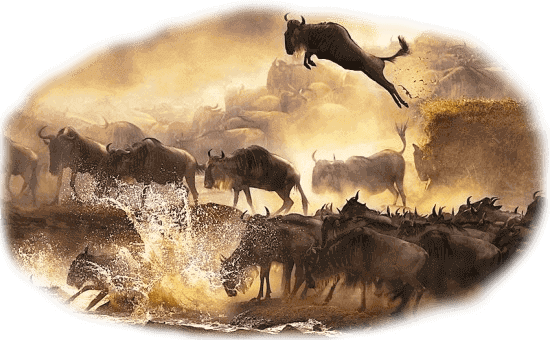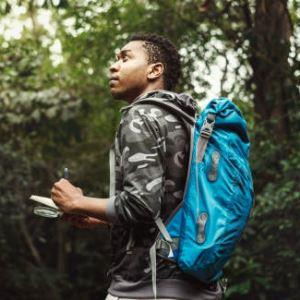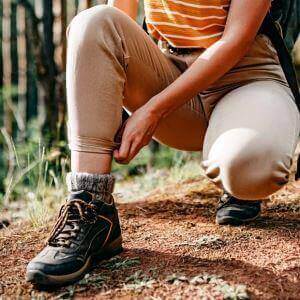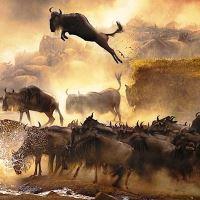 A safari adventure in Kenya is a dream for many, and Spanish tourists will find the country an ideal destination for wildlife, culture, and breathtaking landscapes. Kenya is renowned for its iconic savannahs, vibrant tribal traditions, and unparalleled opportunities to witness the Big Five in their natural habitat. For Spanish travelers seeking an authentic African experience, this guide offers essential information to plan an unforgettable journey. The best time to visit Kenya is during the dry seasons, particularly from June to October, when wildlife congregates around water sources. This period also aligns with the famous Great Migration in the Maasai Mara, where millions of wildebeest and zebras cross the Mara River in a dramatic spectacle of survival. December to March is also favorable, offering warm temperatures and excellent visibility for game viewing. For travelers preferring fewer crowds, the transitional months of May and November provide quieter parks and potentially lower travel costs. Kenya is home to a diverse array of national parks and reserves, each offering unique safari experiences. The Maasai Mara stands out as a must-visit location, not only for the Great Migration but also for its high concentration of predators. Amboseli National Park, located at the foot of Mount Kilimanjaro, is famous for its massive elephant herds and postcard-worthy views. Lake Nakuru is a bird-lover's paradise, with flamingos and rare white rhinos. For a more remote experience, Samburu National Reserve offers sightings of unique species like the Grevy's zebra and gerenuk. Tsavo East and West make up one of the largest protected ecosystems in Africa, perfect for more extended, off-the-beaten-path adventures. Tour operators in Kenya cater specifically to international travelers, including packages tailored to Spanish-speaking tourists. These include guided tours with bilingual experts, culturally immersive experiences with local communities, and a range of accommodation options from luxury lodges to eco-friendly camps. Spanish tourists looking for the best Kenya safari tours for Spanish tourists will find plenty of options that balance adventure, comfort, and cultural enrichment. When preparing for a safari, practical planning is crucial. Spanish visitors should obtain an eVisa before departure and consult travel health clinics about recommended vaccines such as yellow fever. Essentials to pack include lightweight clothing in neutral tones, sun protection, a good camera, binoculars, and any personal medications. Embracing local etiquette and learning a few Swahili phrases can enhance the overall experience and show respect for Kenyan hospitality. Kenya presents a rich, multifaceted safari experience for Spanish tourists. With its world-renowned national parks, knowledgeable Spanish-speaking guides, and vibrant cultural encounters, the country offers an unmatched combination of wildlife and authenticity. From the dramatic crossings of the Great Migration to close-up sightings of elephants beneath Mount Kilimanjaro, each day on safari unveils a new highlight. Beyond the game drives, Spanish visitors can engage with local Maasai communities, sample traditional Kenyan cuisine, and unwind in eco-lodges nestled in scenic landscapes. Whether you're a seasoned traveler or a first-time safari-goer, Kenya delivers a safari journey that is both thrilling and deeply personal. The country's commitment to conservation and responsible tourism ensures that every adventure supports local ecosystems and communities. For Spanish tourists seeking a destination that blends natural wonders, immersive experiences, and lasting memories, Kenya truly stands out as an extraordinary choice.
A safari adventure in Kenya is a dream for many, and Spanish tourists will find the country an ideal destination for wildlife, culture, and breathtaking landscapes. Kenya is renowned for its iconic savannahs, vibrant tribal traditions, and unparalleled opportunities to witness the Big Five in their natural habitat. For Spanish travelers seeking an authentic African experience, this guide offers essential information to plan an unforgettable journey. The best time to visit Kenya is during the dry seasons, particularly from June to October, when wildlife congregates around water sources. This period also aligns with the famous Great Migration in the Maasai Mara, where millions of wildebeest and zebras cross the Mara River in a dramatic spectacle of survival. December to March is also favorable, offering warm temperatures and excellent visibility for game viewing. For travelers preferring fewer crowds, the transitional months of May and November provide quieter parks and potentially lower travel costs. Kenya is home to a diverse array of national parks and reserves, each offering unique safari experiences. The Maasai Mara stands out as a must-visit location, not only for the Great Migration but also for its high concentration of predators. Amboseli National Park, located at the foot of Mount Kilimanjaro, is famous for its massive elephant herds and postcard-worthy views. Lake Nakuru is a bird-lover's paradise, with flamingos and rare white rhinos. For a more remote experience, Samburu National Reserve offers sightings of unique species like the Grevy's zebra and gerenuk. Tsavo East and West make up one of the largest protected ecosystems in Africa, perfect for more extended, off-the-beaten-path adventures. Tour operators in Kenya cater specifically to international travelers, including packages tailored to Spanish-speaking tourists. These include guided tours with bilingual experts, culturally immersive experiences with local communities, and a range of accommodation options from luxury lodges to eco-friendly camps. Spanish tourists looking for the best Kenya safari tours for Spanish tourists will find plenty of options that balance adventure, comfort, and cultural enrichment. When preparing for a safari, practical planning is crucial. Spanish visitors should obtain an eVisa before departure and consult travel health clinics about recommended vaccines such as yellow fever. Essentials to pack include lightweight clothing in neutral tones, sun protection, a good camera, binoculars, and any personal medications. Embracing local etiquette and learning a few Swahili phrases can enhance the overall experience and show respect for Kenyan hospitality. Kenya presents a rich, multifaceted safari experience for Spanish tourists. With its world-renowned national parks, knowledgeable Spanish-speaking guides, and vibrant cultural encounters, the country offers an unmatched combination of wildlife and authenticity. From the dramatic crossings of the Great Migration to close-up sightings of elephants beneath Mount Kilimanjaro, each day on safari unveils a new highlight. Beyond the game drives, Spanish visitors can engage with local Maasai communities, sample traditional Kenyan cuisine, and unwind in eco-lodges nestled in scenic landscapes. Whether you're a seasoned traveler or a first-time safari-goer, Kenya delivers a safari journey that is both thrilling and deeply personal. The country's commitment to conservation and responsible tourism ensures that every adventure supports local ecosystems and communities. For Spanish tourists seeking a destination that blends natural wonders, immersive experiences, and lasting memories, Kenya truly stands out as an extraordinary choice.
Essential Safari Planning Highlights for Spanish Visitors
| Topic | Details |
|---|---|
| Best Time To Visit | June to October (Great Migration); Dec to March (dry season) |
| Top Safari Destinations | Maasai Mara, Amboseli, Lake Nakuru, Samburu, Tsavo |
| Recommended Packages | 7-10 day safaris with Spanish guides and cultural add-ons |
| Travel Essentials For Spaniards | eVisa, vaccinations, neutral clothing, gear, eco-conscious travel |
Best Time to Visit Kenya for a Safari Adventure Experience
Planning the ideal safari in Kenya requires careful consideration of the seasons, especially for Spanish travelers looking to maximize their wildlife viewing and comfort. Kenya’s climate supports safari tours all year, but each season offers a different kind of magic. From June to October, the dry season unfolds, offering perhaps the most dramatic scenes. During this period, vegetation thins out and animals gather around rivers and watering holes, making wildlife spotting incredibly rewarding. Most notably, this window hosts the Great Migration in the Maasai Mara a bucket-list event for many nature enthusiasts.The months from December to March present another excellent opportunity for safaris. The weather is warm and mostly dry, ideal for clear photography and game drives. This period also sees newborn wildlife and increased predator activity. For travelers hoping to enjoy more serene settings with fewer tourists, the shoulder months of May and November are often overlooked gems. They offer lush landscapes and lower prices without significantly compromising the wildlife experience. The key to an unforgettable safari is not just about timing, but also about selecting the right route and tour provider. Spanish tourists seeking a deeper connection with the land and its people might opt for a complete safari itinerary in Kenya for Spanish speakers. These itineraries typically include professional Spanish-speaking guides, culturally immersive excursions, and accommodations ranging from luxury lodges to eco-friendly tented camps. The benefit of these tailored packages is the seamless blend of adventure and cultural understanding, creating a more enriching travel experience. The best time to visit Kenya for a safari adventure hinges on personal preference, as each season brings its own unique advantages. For wildlife enthusiasts, the dry season from June to October is unmatched. With thinning vegetation and animals clustering near water sources, sightings are frequent and often dramatic. This period also coincides with the famed Great Migration, when millions of wildebeest and zebras thunder across the plains of the Maasai Mara, pursued by predators in one of nature's greatest spectacles. December through March offers another exceptional safari window, marked by warm, sunny weather and the arrival of newborn animals. These months are particularly good for photography due to the clear skies and golden light. Meanwhile, the shoulder seasons in May and November attract those looking for a quieter, more intimate experience. The landscapes are greener, prices are lower, and the parks less crowded, all without greatly compromising wildlife encounters. Spanish tourists can feel confident that, with the right preparation and local support, their safari journey will be both exciting and deeply enriching. Choosing the best time to visit is just one part of crafting an unforgettable adventure through Kenya's extraordinary wilderness. Equally important is selecting experienced tour operators who understand the needs of Spanish travelers and can offer guidance in their native language. Many local providers now offer bespoke itineraries tailored to Spanish speakers, ensuring smooth communication, insightful interpretation of local culture, and a more immersive experience overall. Understanding the diverse landscapes and ecosystems of Kenya enhances the safari. From the savannahs of the Maasai Mara to the wetlands of Amboseli and the arid beauty of Samburu, every destination offers its own rhythm and surprises. With proper planning, Spanish tourists can explore multiple regions and enjoy a balanced mix of game drives, nature walks, and cultural interactions. Whether traveling solo, as a couple, or with family, Kenya has the infrastructure and welcoming spirit to deliver a world-class safari experience.
When to Travel to Kenya for the Best Safari Season
Choosing the right time to travel to Kenya is crucial for making the most out of your safari adventure, especially for Spanish tourists who want to align wildlife sightings, climate, and cultural opportunities. Kenya is a year-round destination, but understanding the nuances of each season can elevate the experience. From June to October, Kenya experiences its dry season, widely considered the best time for game viewing. During these months, the landscape becomes arid, and wildlife concentrates around rivers and waterholes, making sightings more predictable and dramatic. This period also features the world-famous Great Migration in the Maasai Mara, where millions of wildebeest and zebras cross into Kenya from Tanzania, trailed by predators. For any safari enthusiast, witnessing this natural phenomenon is truly unforgettable. December to March is another great period for safaris. These months offer warm, sunny days and are ideal for photography, as skies remain clear and lighting conditions are optimal. This season also coincides with the calving period, which brings out predators and offers a unique look at the circle of life in the savannah. If you're looking to avoid crowds and possibly secure better rates, the shoulder seasons April to May and November are worth considering. While rain can be more frequent, the parks are lush and beautiful, and the experience is more personal due to fewer tourists. This is an excellent choice for travelers seeking tranquility and intimacy with nature. To make the most of your adventure, consider booking a complete safari itinerary in Kenya for Spanish speakers. These specially designed tours include Spanish-speaking guides, tailored cultural experiences, and a seamless journey through Kenya's most iconic parks. They also often include time for rest and reflection, allowing travelers to not only see wildlife but also connect with local communities and landscapes. No matter when you choose to visit, planning ahead is key. Kenya offers such a wide range of landscapes, wildlife habitats, and cultural experiences that organizing your safari with clear goals in mind will enhance your overall trip. From the sweeping savannahs of the Maasai Mara, where lions and wildebeests roam, to the reflective wetlands of Amboseli beneath Mount Kilimanjaro, every destination tells a different story. The rugged terrain of Samburu in the north reveals unique species not found elsewhere, adding diversity to your wildlife encounters. Understanding these varied ecosystems allows travelers to align their safari itinerary with the types of experiences they value most. Whether your interest lies in photography, rare species, birdwatching, or cultural immersion, Kenya delivers exceptional opportunities. With thoughtful planning, the right local guidance, and an openness to adventure, your Kenyan safari will not only meet your expectations it may far exceed them, leaving you with memories to last a lifetime.
Top Kenya Safari Destinations for Spanish Travel Enthusiasts
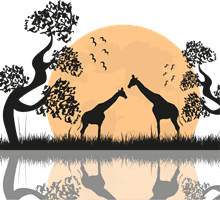 Kenya offers an extraordinary range of safari destinations that cater to every kind of traveler, and Spanish-speaking visitors will find the country both accessible and exhilarating. Whether you're drawn to vast savannahs, dramatic escarpments, or peaceful lakeshores, Kenya's parks provide a window into some of the world’s most captivating wildlife encounters. One of the most renowned safari spots is the Maasai Mara National Reserve. Famous for the Great Migration and abundant predators, it's a must-see for anyone visiting Kenya. Spanish travelers can enjoy guided tours in their native language, gaining deeper insights into animal behaviors and Maasai traditions. Equally compelling is Amboseli National Park, where elephants roam beneath the snow-capped backdrop of Mount Kilimanjaro. This park is ideal for photography and close-range elephant sightings. For bird lovers and those interested in rhino conservation, Lake Nakuru National Park is a gem. With thousands of flamingos and a strong presence of white and black rhinos, it provides a spectacular setting for nature photography. Samburu National Reserve in northern Kenya introduces visitors to unique wildlife such as the Grevy’s zebra and reticulated giraffe, species not commonly seen in southern parks. Its dry, rugged landscape offers a different but equally enriching experience. Tsavo East and Tsavo West National Parks together form one of the largest wildlife conservancies in Africa. With red-dust elephants, lava flows, and hidden oases, these parks are perfect for adventurous spirits looking for extended safaris off the beaten path. These top wildlife parks in Kenya for Spanish-speaking visitors not only deliver iconic animal sightings but also provide a wealth of cultural and educational experiences. Many parks offer guided tours led by fluent Spanish-speaking naturalists who help explain animal behavior, ecosystems, and the deep connection between wildlife and local communities. For Spanish tourists, this level of engagement makes the safari more meaningful and accessible. Eco-lodge accommodations within or near the parks give travelers the chance to stay close to nature without sacrificing comfort. These lodges often incorporate sustainable practices and employ locals, further enriching the travel experience. Whether opting for high-end luxury or more modest, eco-conscious stays, visitors can enjoy breathtaking views, campfire dinners, and early morning game drives that reveal Kenya’s raw beauty. From all-inclusive safari packages to flexible itineraries that suit independent explorers, Kenya provides Spanish-speaking travelers with a diverse range of options. These offerings ensure that every traveler, regardless of budget or travel style, can discover the wonders of Kenya in a personalized and unforgettable way.
Kenya offers an extraordinary range of safari destinations that cater to every kind of traveler, and Spanish-speaking visitors will find the country both accessible and exhilarating. Whether you're drawn to vast savannahs, dramatic escarpments, or peaceful lakeshores, Kenya's parks provide a window into some of the world’s most captivating wildlife encounters. One of the most renowned safari spots is the Maasai Mara National Reserve. Famous for the Great Migration and abundant predators, it's a must-see for anyone visiting Kenya. Spanish travelers can enjoy guided tours in their native language, gaining deeper insights into animal behaviors and Maasai traditions. Equally compelling is Amboseli National Park, where elephants roam beneath the snow-capped backdrop of Mount Kilimanjaro. This park is ideal for photography and close-range elephant sightings. For bird lovers and those interested in rhino conservation, Lake Nakuru National Park is a gem. With thousands of flamingos and a strong presence of white and black rhinos, it provides a spectacular setting for nature photography. Samburu National Reserve in northern Kenya introduces visitors to unique wildlife such as the Grevy’s zebra and reticulated giraffe, species not commonly seen in southern parks. Its dry, rugged landscape offers a different but equally enriching experience. Tsavo East and Tsavo West National Parks together form one of the largest wildlife conservancies in Africa. With red-dust elephants, lava flows, and hidden oases, these parks are perfect for adventurous spirits looking for extended safaris off the beaten path. These top wildlife parks in Kenya for Spanish-speaking visitors not only deliver iconic animal sightings but also provide a wealth of cultural and educational experiences. Many parks offer guided tours led by fluent Spanish-speaking naturalists who help explain animal behavior, ecosystems, and the deep connection between wildlife and local communities. For Spanish tourists, this level of engagement makes the safari more meaningful and accessible. Eco-lodge accommodations within or near the parks give travelers the chance to stay close to nature without sacrificing comfort. These lodges often incorporate sustainable practices and employ locals, further enriching the travel experience. Whether opting for high-end luxury or more modest, eco-conscious stays, visitors can enjoy breathtaking views, campfire dinners, and early morning game drives that reveal Kenya’s raw beauty. From all-inclusive safari packages to flexible itineraries that suit independent explorers, Kenya provides Spanish-speaking travelers with a diverse range of options. These offerings ensure that every traveler, regardless of budget or travel style, can discover the wonders of Kenya in a personalized and unforgettable way.
Must-Visit Kenya National Parks and Safari Reserves for Tourists
Kenya is world-renowned for its breathtaking natural beauty and abundant wildlife, making it one of the top safari destinations globally. For Spanish-speaking tourists, the country's national parks and reserves offer not only unforgettable encounters with nature but also opportunities to experience Kenya’s vibrant cultures, diverse landscapes, and expertly guided tours. These protected areas showcase the richness of East Africa’s flora and fauna, providing a perfect balance of adventure, education, and relaxation for every traveler.
- Maasai Mara National Reserve: This iconic reserve is synonymous with the Great Migration, where millions of wildebeest and zebras cross from the Serengeti in search of greener pastures. In addition to the Big Five, visitors can witness dramatic predator-prey interactions and enjoy cultural visits to Maasai communities.
- Amboseli National Park: Set against the stunning backdrop of Mount Kilimanjaro, Amboseli is known for its large herds of elephants. The flat, open terrain makes it ideal for photography and spotting wildlife up close, particularly during sunrise and sunset.
- Lake Nakuru National Park: Nestled around a picturesque alkaline lake, this park is famous for its pink flamingo populations and as a sanctuary for both white and black rhinos. It's a haven for birdwatchers and conservation-minded travelers.
- Samburu National Reserve: Located in Kenya’s arid north, Samburu features unique wildlife species like the Grevy's zebra, Somali ostrich, and gerenuk. The landscape is strikingly different from the southern parks, offering rugged beauty and fewer crowds.
- Tsavo National Parks: Comprising Tsavo East and Tsavo West, this massive area is one of the largest wildlife sanctuaries in Africa. Known for its red-dust elephants and dramatic volcanic scenery, it appeals to travelers looking for remote, immersive safari experiences.
Each of these parks provides distinct safari opportunities and cultural insights, making them essential stops for anyone seeking the full spectrum of Kenya’s natural wonders.
Best Kenya Safari Packages and Tour Deals for Spaniards
Planning the perfect safari in Kenya is easier than ever for Spanish families, thanks to a wide variety of thoughtfully curated tour packages. Whether you're looking for a luxurious getaway or a more budget-friendly adventure, Kenya's tour operators offer tailored itineraries designed to deliver an unforgettable wildlife experience, with comfort and cultural immersion in mind. The best Kenya safari packages for Spanish families often feature Spanish-speaking guides who provide detailed explanations of animal behavior, ecology, and the rich cultural heritage of the regions visited. These tours eliminate language barriers and enhance the learning experience for both children and adults. Packages usually include accommodations in family-friendly lodges or tented camps, transportation in comfortable safari vehicles, and meals suited to diverse dietary needs. Popular options include 7-day Big Five tours, 10-day itineraries covering multiple national parks, and safari-and-beach combinations with time in coastal destinations like Mombasa or Diani Beach. Cultural experiences are often woven into these packages such as visits to Maasai villages providing valuable insights into local life and traditions. Family-centered activities, such as junior ranger programs and nature walks, ensure that even younger travelers remain engaged and entertained. These packages can be customized based on the family's interests, travel style, and pace. Families can choose between thrilling game drives at sunrise, educational nature walks tailored for children, or immersive cultural experiences that include meeting local communities. Safari operators are often flexible and understanding of family dynamics, offering optional activities for various age groups to keep every member engaged. Whether you’re observing lions stalking prey in the Maasai Mara, elephants cooling off in the swamps of Amboseli, or flamingos painting the shores of Lake Nakuru pink, each destination offers something magical. Children benefit from hands-on learning moments that combine adventure with education, fostering a deeper appreciation for nature and conservation. Choosing a reputable, certified tour operator is essential to ensure safety, comfort, and a smooth, enriching journey for all members of the family. These operators typically handle every detail from transportation and lodging to park entry and meals freeing families to focus on enjoying the experience. With careful planning, a family safari in Kenya becomes more than just a vacation it becomes a transformative journey filled with shared memories and meaningful discovery.
Top-Rated Safari Tours in Kenya With Spanish-Speaking Guides
Spanish tourists seeking a once-in-a-lifetime African adventure have a variety of safari tours in Kenya to choose from, many of which are designed specifically with their language and cultural preferences in mind. Kenya's tour industry has adapted to the needs of international visitors, offering packages that pair extraordinary wildlife encounters with Spanish-speaking guides for a more immersive and informed journey. These guided tours typically cover iconic parks such as the Maasai Mara, Amboseli, and Tsavo. Professional Spanish-speaking naturalists accompany guests throughout, providing in-depth knowledge about animal behavior, ecosystems, and conservation efforts. This ensures that tourists don’t miss out on valuable context during game drives and cultural stops. Whether you prefer short three-day excursions or longer ten-day circuits, options range from private luxury lodges to shared group safaris. Importantly, many providers now also cater to those looking for affordability without sacrificing quality, offering budget-friendly safari tours in Kenya for Spanish tourists. These packages often include transportation, park entry fees, meals, and accommodations all coordinated by experienced operators who ensure a safe and enjoyable experience. Many tours include additional cultural experiences like visiting a traditional Maasai village or enjoying local cuisine, which adds layers of depth and authenticity to the adventure. These experiences offer travelers the opportunity to engage with Kenya beyond its wildlife, connecting them to the people, customs, and heritage that define the country. Whether it's watching traditional dances, learning about Maasai craftsmanship, or savoring regional dishes, these cultural moments make a lasting impression. Whether traveling solo, as a couple, or with family, these top-rated tours offer a balance of comfort, education, and exploration. Tour operators understand the diverse needs of Spanish-speaking tourists and strive to make each aspect of the journey enjoyable and enriching. From the moment guests are picked up at the airport to the final sunset game drive, every detail is managed with care and cultural sensitivity. Choosing a safari led by Spanish-speaking professionals transforms the trip into something far more meaningful. It enhances understanding, breaks down language barriers, and creates a more personal connection to Kenya’s wildlife, people, and places. This combination of accessibility and authenticity makes the entire experience not just a vacation, but a journey of discovery.
Essential Kenya Safari Travel Tips For Spanish Tourists
 Preparing for a safari in Kenya is an exciting part of the journey, especially for Spanish tourists venturing into East Africa for the first time. Beyond the thrill of seeing wildlife up close, good preparation helps ensure your trip is safe, smooth, and culturally enriching. The first step is to check entry requirements. Spanish nationals typically need an eVisa to enter Kenya, which can be conveniently obtained online before travel. It's important to consult with a travel clinic about recommended vaccinations. Yellow fever is commonly advised, and malaria prophylaxis may be necessary depending on your itinerary. Travel insurance with medical coverage is also strongly recommended. When it comes to packing, focus on functionality and comfort. Lightweight, breathable clothing in neutral tones is ideal, as it helps regulate body temperature and blends into the natural surroundings. A wide-brimmed hat, quality sunglasses, and high-SPF sunscreen will protect you from the sun during open vehicle game drives. Binoculars and a good camera with a zoom lens are essential for wildlife viewing, while a reusable water bottle will help you stay hydrated in remote areas. Other must-haves include any personal medication, insect repellent, and travel-sized hygiene products. It’s a good idea to carry a small medical kit with basics like pain relievers, antiseptics, and plasters. Some lodges are remote, so it's wise to come prepared. Cultural respect goes a long way in Kenya. Learning a few basic Swahili phrases can enrich your interactions and show appreciation for local hospitality. Greetings like "Jambo" (hello) and "Asante" (thank you) are warmly received. Modest clothing is encouraged when visiting local communities or urban areas. Consider choosing eco-friendly lodges and safari operators that support wildlife conservation and local employment. Not only will your trip have a lower environmental impact, but you’ll also contribute to the sustainable future of Kenya’s unique ecosystems. With a bit of planning and an open mindset, your safari will not just be a sightseeing tour it will become a transformative experience that brings you closer to the heart of Africa. Spanish tourists have the opportunity to engage deeply with Kenya's majestic landscapes, iconic wildlife, and warm, welcoming communities. Every moment, from the early morning game drives to the evening storytelling around a campfire, offers a chance to learn, connect, and reflect. As you travel through Kenya's renowned national parks and reserves, you will witness not only the beauty of nature but also the resilience and traditions of its people. Staying in eco-lodges that support local communities and participating in guided cultural experiences add layers of meaning to your journey. These immersive elements turn your safari into more than just a holiday they transform it into a story worth telling. By embracing sustainable travel practices, learning a few phrases in Swahili, and showing respect for local customs, Spanish visitors can enrich their experience while contributing positively to conservation and community efforts. Kenya offers not just adventure, but a deeper understanding of the interconnection between people, wildlife, and the land. With curiosity and respect, your safari will leave you with memories that last a lifetime and a new appreciation for the wild heart of Africa.
Preparing for a safari in Kenya is an exciting part of the journey, especially for Spanish tourists venturing into East Africa for the first time. Beyond the thrill of seeing wildlife up close, good preparation helps ensure your trip is safe, smooth, and culturally enriching. The first step is to check entry requirements. Spanish nationals typically need an eVisa to enter Kenya, which can be conveniently obtained online before travel. It's important to consult with a travel clinic about recommended vaccinations. Yellow fever is commonly advised, and malaria prophylaxis may be necessary depending on your itinerary. Travel insurance with medical coverage is also strongly recommended. When it comes to packing, focus on functionality and comfort. Lightweight, breathable clothing in neutral tones is ideal, as it helps regulate body temperature and blends into the natural surroundings. A wide-brimmed hat, quality sunglasses, and high-SPF sunscreen will protect you from the sun during open vehicle game drives. Binoculars and a good camera with a zoom lens are essential for wildlife viewing, while a reusable water bottle will help you stay hydrated in remote areas. Other must-haves include any personal medication, insect repellent, and travel-sized hygiene products. It’s a good idea to carry a small medical kit with basics like pain relievers, antiseptics, and plasters. Some lodges are remote, so it's wise to come prepared. Cultural respect goes a long way in Kenya. Learning a few basic Swahili phrases can enrich your interactions and show appreciation for local hospitality. Greetings like "Jambo" (hello) and "Asante" (thank you) are warmly received. Modest clothing is encouraged when visiting local communities or urban areas. Consider choosing eco-friendly lodges and safari operators that support wildlife conservation and local employment. Not only will your trip have a lower environmental impact, but you’ll also contribute to the sustainable future of Kenya’s unique ecosystems. With a bit of planning and an open mindset, your safari will not just be a sightseeing tour it will become a transformative experience that brings you closer to the heart of Africa. Spanish tourists have the opportunity to engage deeply with Kenya's majestic landscapes, iconic wildlife, and warm, welcoming communities. Every moment, from the early morning game drives to the evening storytelling around a campfire, offers a chance to learn, connect, and reflect. As you travel through Kenya's renowned national parks and reserves, you will witness not only the beauty of nature but also the resilience and traditions of its people. Staying in eco-lodges that support local communities and participating in guided cultural experiences add layers of meaning to your journey. These immersive elements turn your safari into more than just a holiday they transform it into a story worth telling. By embracing sustainable travel practices, learning a few phrases in Swahili, and showing respect for local customs, Spanish visitors can enrich their experience while contributing positively to conservation and community efforts. Kenya offers not just adventure, but a deeper understanding of the interconnection between people, wildlife, and the land. With curiosity and respect, your safari will leave you with memories that last a lifetime and a new appreciation for the wild heart of Africa.
Key Travel Advice and Packing List For Kenya Safari Holidays
Planning a safari in Kenya can be both thrilling and overwhelming, especially for Spanish tourists traveling to Africa for the first time. From adapting to a new climate to ensuring your health and safety, preparing thoroughly is the key to a seamless adventure. Kenya’s rugged landscapes, diverse wildlife, and remote lodges demand thoughtful preparation. This section outlines the ultimate safari packing list for Spanish tourists in Kenya and includes travel advice to help you stay comfortable, safe, and culturally respectful during your journey.
- Essential Travel Documents: Always carry a valid passport, printed eVisa approval, travel insurance, and copies of important documents. These are required for park entries, flights, and emergencies. It's also useful to have a small folder to keep everything organized and waterproof.
- Clothing and Footwear: Lightweight, breathable clothes in earth tones are ideal. Pack long-sleeve shirts and pants for sun and insect protection. Include a fleece or jacket for chilly mornings and evenings, and sturdy, closed-toe shoes suitable for walks or hikes in uneven terrain.
- Health and Safety Items: Consult a travel doctor about yellow fever vaccination and malaria prophylaxis. Bring insect repellent with DEET, a basic medical kit with pain relievers and antiseptic wipes, and hand sanitizer. Also, include rehydration salts if you plan to visit drier regions.
- Safari Gear: A good camera with zoom lens, binoculars, a flashlight or headlamp, and extra batteries or a portable charger are essential for remote lodges. These tools help you capture and enjoy wildlife experiences more fully.
- Sun and Heat Protection: Pack sunglasses, high-SPF sunscreen, and a wide-brimmed hat to protect against the strong equatorial sun. A reusable water bottle is crucial for staying hydrated on game drives.
- Cultural and Environmental Awareness: Learn a few Swahili greetings, and pack modest clothing for visits to communities. Choose eco-friendly toiletries and avoid plastic waste. Opt for safari companies and lodges that support conservation and local economies.
This guide will help Spanish travelers pack confidently, stay comfortable, and fully enjoy every moment of their Kenyan safari adventure. Proper preparation not only enhances the overall experience but also helps you adapt to the diverse conditions of Kenya's landscapes from the humid coastal areas to the cool highland mornings and sun-drenched savannahs. Understanding the importance of appropriate gear and cultural etiquette will ensure smoother travel and more authentic connections with local communities. By packing mindfully and following the recommendations laid out, Spanish tourists can focus on the wonder of spotting wildlife, learning about Kenya's rich ecosystems, and participating in sustainable tourism. A well-packed bag becomes your reliable companion throughout your journey, helping you stay focused on what truly matters: the unforgettable moments, the majestic animals, and the unique cultural exchanges that define a safari in Kenya. With these preparations, every sunrise game drive and every quiet evening under the stars will feel even more meaningful.
